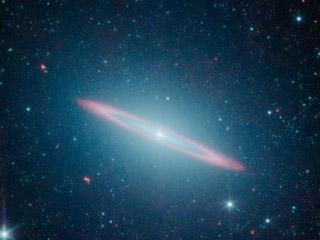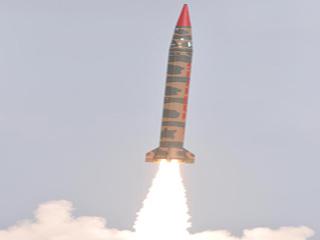
New observations from NASA's Spitzer Space Telescope reveal the Sombrero galaxy is not simply a regular flat disk galaxy of stars as previously believed, but a more round elliptical galaxy with a flat disk tucked inside. Photo: NASA/JPL-Caltech.
PASADENA, CALIFORNIA (BNS): The infrared vision of NASA's Spitzer Space Telescope has revealed that the Sombrero galaxy -- named after its appearance in visible light to a wide-brimmed hat -- is in fact two galaxies in one.
The galaxy, which is a round elliptical galaxy with a thin disk embedded inside, is one of the first known to exhibit characteristics of the two different types. The findings will lead to a better understanding of galaxy evolution, a topic still poorly understood.
"Spitzer is helping to unravel secrets behind an object that has been imaged thousands of times. It is intriguing Spitzer can read the fossil record of events that occurred billions of years ago within this beautiful and archetypal galaxy," Sean Carey of NASA's Spitzer Science Center at the California Institute of Technology in Pasadena, said in the NASA statement.
The Sombrero galaxy, also known as NGC 4594, is located 28 million light-years away in the constellation Virgo. Astronomers do not know whether the Sombrero's disk is shaped like a ring or a spiral, but agree it belongs to the disk class.
Spitzer captures a different view of the galaxy than visible-light telescopes. Spitzer's infrared vision sees old stars through the dust and reveals the halo has the right size and mass to be a giant elliptical galaxy.
The findings also answer a mystery about the number of globular clusters in the Sombrero galaxy. Globular clusters are spherical nuggets of old stars. Ellipticals typically have a few thousand, while spirals contain a few hundred.
The Sombrero has almost 2,000, a number that makes sense now but had puzzled astronomers when they thought it was only a disk galaxy, the report added.
 Previous Article
Previous Article Next Article
Next Article













The Indian Air Force, in its flight trials evaluation report submitted before the Defence Ministry l..
view articleAn insight into the Medium Multi-Role Combat Aircraft competition...
view articleSky enthusiasts can now spot the International Space Station (ISS) commanded by Indian-American astr..
view article